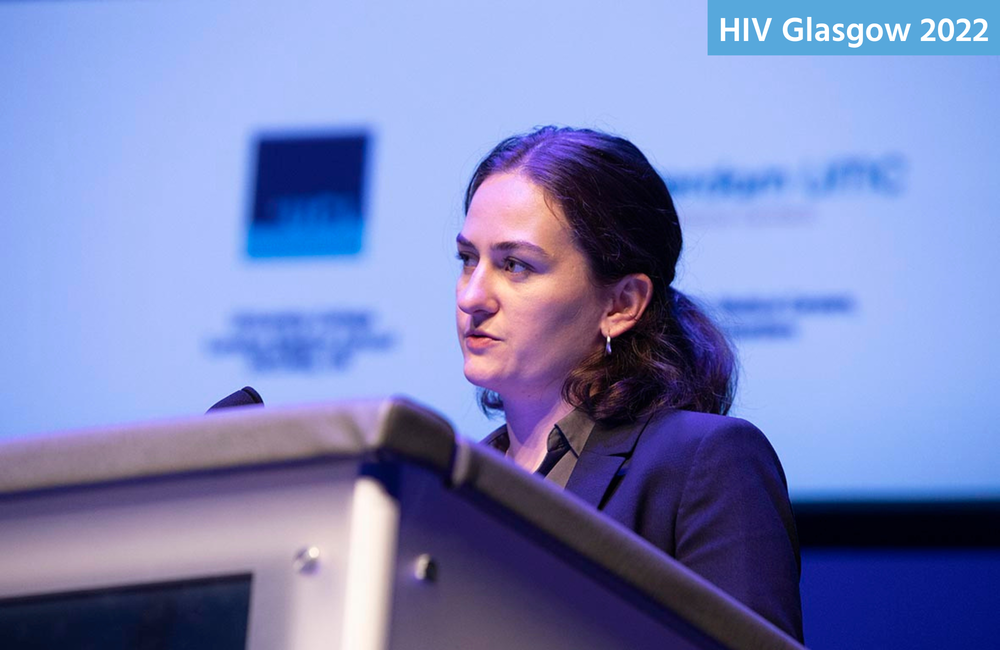
Almost half of a large European cohort of people with HIV were at very high risk of heart attack by 2019, but a substantial proportion were not receiving medication to lower blood pressure or lipid levels, investigators from the RESPOND study reported at the International Congress on Drug Therapy in HIV Infection (HIV Glasgow) on Monday.
One third of people eligible for medication to reduce their blood pressure were not receiving it in 2019 and 43% were not receiving medication to reduce lipid levels, the study found. A similar proportion were not receiving medication to control their blood sugar.
European AIDS Clinical Society guidelines recommend that all people with HIV who have a greater than 10% risk of heart attack, stroke or major heart surgery as a result of heart disease in the next ten years should be prescribed lipid-lowering medication, such as a statin. Treatment for raised blood pressure is especially recommended for this group too.
People with HIV have a higher risk of cardiovascular diseases (diseases of the heart and circulation) than others of the same age, partly due to HIV but also because they are more likely to smoke.
Guidelines recommend a variety of measures to reduce the risk of serious cardiovascular disease, but studies have shown that individual measures are unevenly applied. However, as cardiovascular disease is caused by multiple factors, it is important to understand where there are gaps in risk reduction and whether those gaps disproportionately affect specific groups of people.
The RESPOND cohort is a large international cohort collaboration designed to investigate long-term health outcomes in people with HIV taking antiretroviral treatment in Europe and Australia. RESPOND investigators at the University of Copenhagen, Denmark, used the cohort data to look at the use of preventive measures against heart disease in people with HIV.
The study investigators assessed whether any of seven preventive measures had been adopted to reduce cardiovascular risk in people with a very high risk of heart attack or stroke. A very high risk was defined as a 10% or greater risk within ten years of a serious cardiovascular event such as heart attack, stroke or death from a serious cardiovascular event, or surgery for major heart disease caused by hardening of the arteries or blockages due to raised cholesterol.
The preventive measures were:
- Weight loss (>7%) for people with body mass index of 30 or above (clinical obesity)
- Stopping smoking
- Discontinuation of antiretrovirals previously associated with cardiovascular disease (lopinavir/ritonavir, darunavir or abacavir)
- Use of medication to reduce blood pressure in people with high blood pressure
- Use of ACE inhibitors or angiotensin receptor blockers (ARB) in persons with high blood pressure and/or diabetes
- Use of antidiabetic medication in people with diabetes
- Use of medication to lower cholesterol or triglycerides in people with raised lipid levels.
The study looked at the risk of heart disease and the use of preventive measures in 22,050 cohort participants between 2012 and 2019. The absolute number of participants differed year by year as people joined or left cohorts.
Overall, 75% of participants were male, 45% had acquired HIV through sex between men and 14% through injecting drug use. Seventy-five per cent were White. Forty-four per cent were smokers, 42% had elevated lipids, 19% had high blood pressure, 25% were overweight and 8% were clinically obese. Five per cent had diabetes. At baseline, 33% had been exposed to abacavir, 26% to lopinavir and 16% to darunavir.
The proportion with very high risk of heart disease rose from 31% in 2012 to 49% in 2019. People with a very high risk of heart disease differed from the overall cohort in several ways. They were more likely to have raised lipid levels (63%), high blood pressure (38%) and diabetes (15%) and were more often smokers (57%) than the cohort as a whole. They were more likely to have been exposed to lopinavir (36%), abacavir (52%) and indinavir (33%) (a marker of living with HIV for longer, as indinavir was largely replaced by other drugs after 2000).
People at very high risk of heart disease were older than the cohort as a whole (a median age of 55 years vs 45 years).
The use of three measures significantly increased between 2012 and 2019:
- Discontinuation of lopinavir/ritonavir
- Discontinuation of darunavir
- Discontinuation of abacavir after more than six months of treatment with the drug.
But there was no significant change in the proportions who received medication to treat high blood pressure (66%) between 2012 and 2019, nor in the proportion receiving lipid-lowering drugs (57%) or ACE or ARB inhibitors (42%).
There was no change in the proportion of smokers who stopped smoking between 2012 and 2019 (7%) and the proportion with weight loss actually fell slightly in the same period (from 11.5% to 1o.5%), as did the proportion receiving medication to treat diabetes (from 63% to 57%).
Multivariable analysis of preventive measures by sub-group showed that the use of medication was more common in older people, whether comparing over- and under-50s, or over and under-40s. But there was no age-related difference in the use of other preventive measures.
Women were less likely to receive ACE inhibitors or ARBs, but otherwise, there was no gender difference in the use of preventive measures.
Participants with a viral load below 200 copies/mL, and people who acquired HIV through injecting drug use, were less likely to use lipid-lowering drugs or to stop smoking.
The study investigators say that their findings highlight the need for increased awareness of guidelines for management of cardiovascular risk factors.
Jaschinski N. Use of preventive measures for cardiovascular disease in people with HIV. International Congress on Drug Therapy in HIV Infection (HIV Glasgow), abstract O22, 2022.
